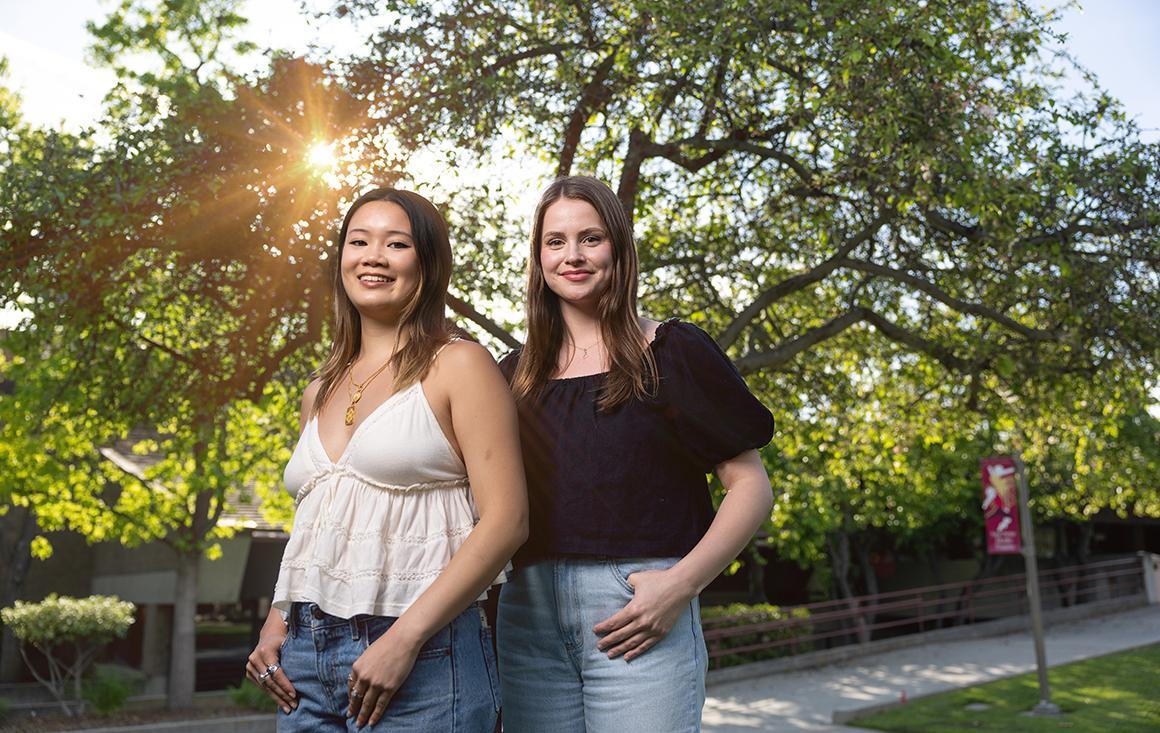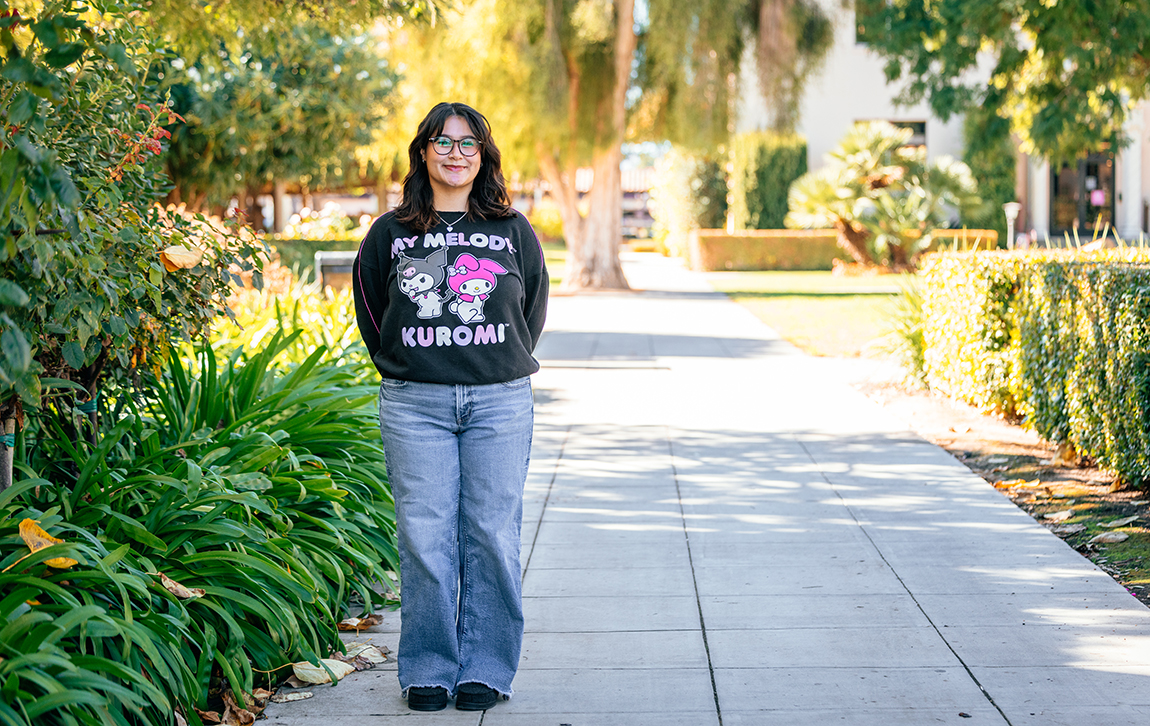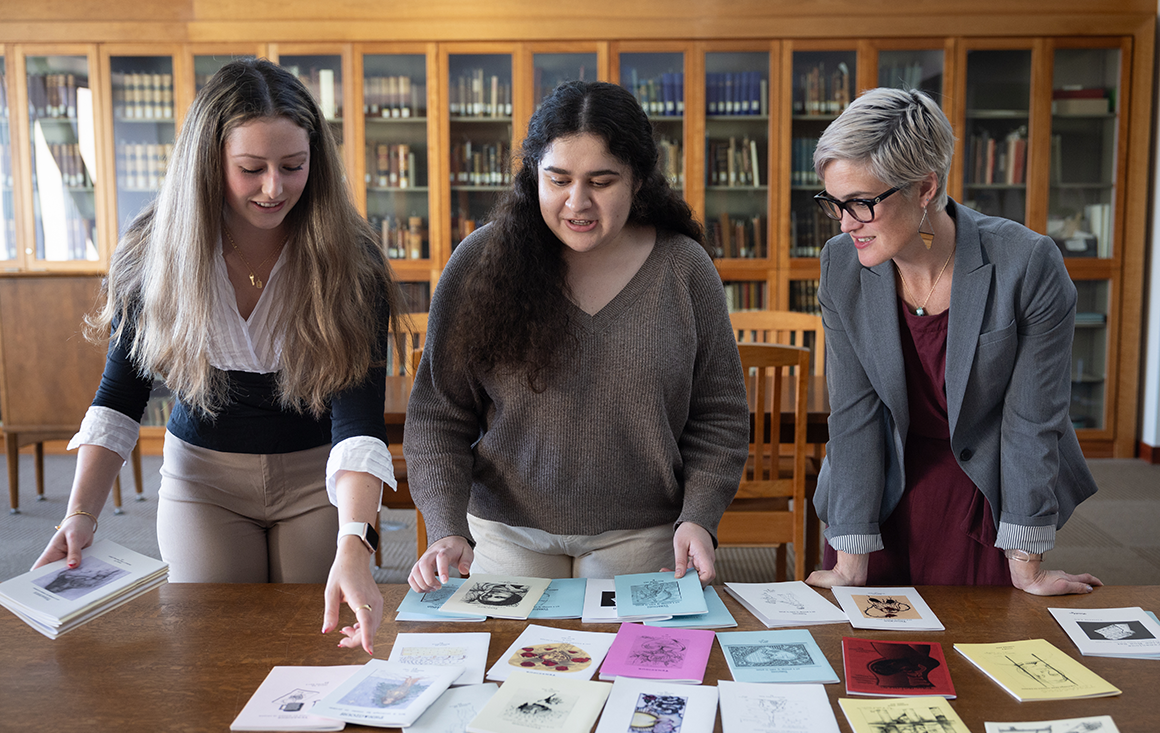A New Lens on Sustainability

As they travel to different parts of town and other destinations, Elena Carter ’24 and Melanie Eng ’24 have come to examine the subtle ways sustainability impacts their lives, and those of others.
For instance, the two recent graduates can’t help but think about what kinds of neighborhoods are planted with trees, which ones aren’t, and why. Tree canopy, they’ve learned, is often lacking in low-income communities where extreme heat impacts a person’s health and quality of life.
There’s even a name for it: shade inequity. And while they weren’t always experts on the subject, what Carter and Eng found out a few months ago about the topic from a study by two Santa Clara researchers is something they now readily share with friends and relatives.
Their insights came about during an innovative Communication Studies/English course that gets students to think about the environment and sustainability through stories, documentaries, and popular films, then requires them to create their own video on a related subject. Eng and Carter’s six-minute feature is titled “Shade Inequity in California.”
“It was something that I hadn’t really even thought about, until it was brought to my attention,” recalls Carter of the idea she and Eng were inspired to investigate after reading a story about the work of SCU climate scientist Iris Stewart-Frey, and adjunct lecturer Jake Dialesandro.
During an extreme heat period in California’s Central Valley last July, the Santa Clara faculty members examined shade composition, type, and configuration as well as socioeconomic data and found that lower-income communities in Fresno are significantly sunnier and hotter than wealthier ones.
As part of their video, the students interviewed Dialesandro, who discusses the importance of studying extreme heat and environmental justice through geospatial technology. Based on these and other data, he believes public policy standards could be created that lead cities to incorporate at least 30 percent shade or greater with any new housing developments.
But as Carter and Eng discovered, the more they delved into the issue, the more “it became pretty clear that this (shade inequity) is everywhere,” says Carter—especially in lower-income areas that straddle the greener, more affluent areas not far from their home base at Santa Clara.
Hiding in plain sight
That revelation occurred after their SCU instructor Maria Judnick, who teaches “Sustainability: Life Stories and Film,” pointed them to Canopy.
The Palo Alto-based urban forestry nonprofit works with underserved communities in the mid-peninsula area, including East Palo Alto, to address what’s known as “the green gap,” or an overwhelming lack of tree canopy in lower-income areas.
In their video, the students interviewed Maya Briones, an advocacy associate at Canopy, who discusses how shade inequity impacts plenty of disadvantaged communities around California that are hiding in plain sight, and how non-profits like hers are building strong tree protection policies to create more urban forest growth and accessible green space in those communities. The film also points to areas where Briones and Canopy are working to plant more trees to reduce shade inequity.
During their interviews (both students already had some film experience) Carter was the primary videographer, using her own Canon G7 X digital camera, while Eng asked the questions.
Yet creating the film didn't just enable them to teach others; it helped both process what they learned themselves—and about themselves—as they move into professional lives after their SCU graduation this month.
“We learned to be very adaptable,” Eng recalls, especially when it came time to edit hours of worthwhile video into just a half-dozen minutes.
For Carter, a communication major from San Jose, and Eng, a neuroscience major from Bellevue, Washington, the course encouraged both to explore sustainability through integral readings, documentaries, and films that offer surprising ways of thinking about sustainability’s link to everything from the economy (“Nomadland”) and race (“A Man Named Pearl”) to ecology (“My Life As a Turkey”) and gender (“Brokeback Mountain”).
An interconnected web of issues
“I went into the class having a definition of sustainability in my head that didn’t entirely hold up,” acknowledges Carter, who initially thought the class would be focused on conservation and protecting the environment.
“We learned that sustainability has a lot to do with not just the well-being of the physical environment and the planet, but human beings and animals and how it’s really an interconnected web of issues that all come together.”
While emphasizing the importance of gathering scientific data, “because it tells us what we need to do,” Judnick offers that “if people can have an emotional connection to a sustainability issue, then there’s much more of a desire to change, or help, or fix it.”
When Eng, for instance, mentioned her project to one of her roommates, who is from Fresno and familiar with the oppressive heat and its effects on workers outdoors, the student told Eng she’d never heard the term “shade inequity” to describe the shortage of shade in parts of her hometown.
“That’s one of the most salient conversations I had” during this project, says Eng, “because she could really understand how it impacted her life, and the lives of those she knows in Fresno.”
Judnick stresses to her students that no matter what their background or major, “everybody has a story to tell about sustainability that’s all around us, in ways we don’t always recognize in our everyday lives,” she says.
“And if we pay attention,” adds Carter, “we can make a difference.”
The Center for Sustainability hosts events and programs, implements initiatives, provides strategic consultation, and shares stories that help the University achieve climate neutrality, practice mindful consumption, develop a culture of sustainability, and use the campus as a living laboratory.


